Purple Swamphen, Purperkoet, Purpurhuhn, Caimão, Calamón Común
Spotted in the Alentejo region of Portugal. Purple Swamphen sound
The Purple Swamphen (Porphyrio porphyrio), also known as the African Purple Swamphen, Purple Moorhen, Purple Gallinule or Purple Coot, is a large bird in the family Rallidae (rails). From its name in French, talève sultane, it is also known as the Sultana Bird. This chicken-sized bird, with its huge feet, bright plumage and red bill and frontal shield is easily-recognisable in its native range. It should not be confused with the American Purple Gallinule, Porphyrio martinica.
Small movie of a Purple Swamphen feeding chicks:
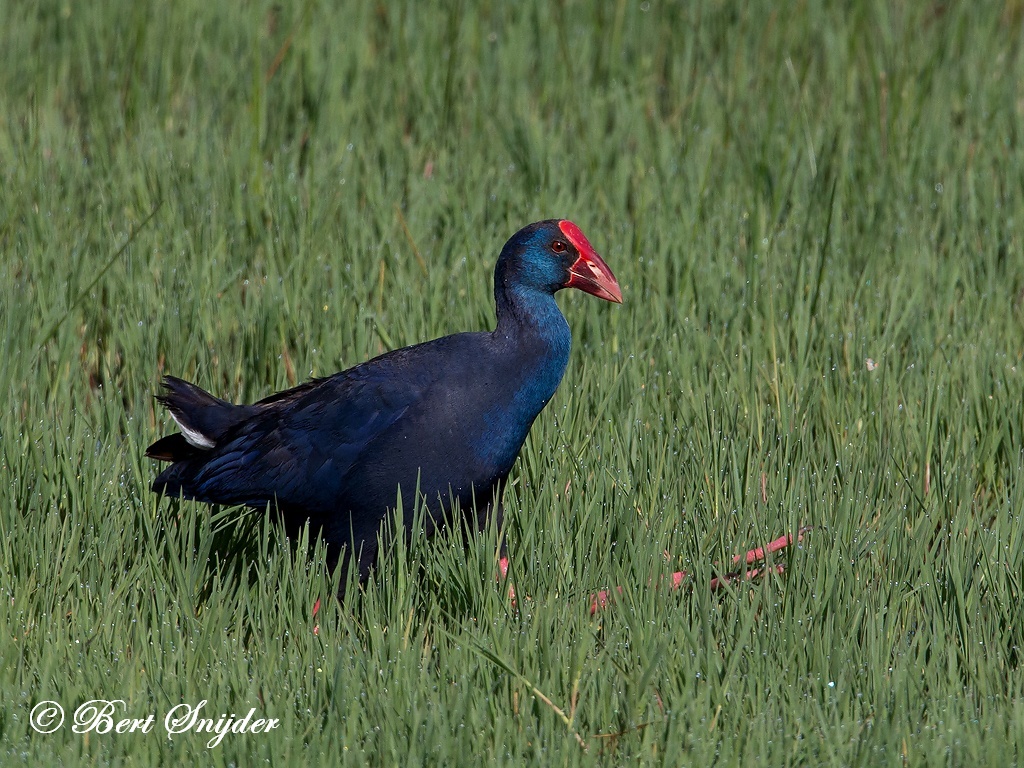
More photos at the bottom of this page.
There are 13 or more subspecies of the Purple Swamphen (depending on the authority) which differ mainly in plumage colour. The subspecies groups are: P. p. porphyrio in the Mediterranean, P. p. madagascariensis in Africa, P. p. poliocephalus in tropical Asia, P. p. melanotus in much of Australasia, P. p. indicus in Indonesia and P. p. pulverulentis in the Philippines. European birds are overall purple-blue, African and south Asian birds have a green back, and Australasian and Indonesian birds have black backs and heads.
The species is highly dispersive. Purple Swamphens are considered to be the ancestors of several island species including the extinct Lord Howe Swamphen and two species of Takah? in New Zealand. On islands where closely related species have become extinct or declined due to human interference, such as New Zealand or New Caledonia, this species has established itself relatively recently.
The species has a very loud explosive call described as a “raucous high-pitched screech, with a subdued musical tuk-tuk”. It is particularly noisy during the breeding season. Despite being clumsy in flight it can fly long distances, and it is a good swimmer, especially for a bird without webbed feet.
The Purple Swamphens are generally seasonal breeders, but the season varies across their large range, correlating with peak rainfall in many places, or summer in more temperate climes. The Purple Swamphen breeds in warm reed beds. The male has an elaborate courtship display, holding water weeds in his bill and bowing to the female with loud chuckles. In the western parts of the range the pattern of social behaviour tends to be monogamy, but cooperative breeding groups are more common in the eastern parts of the range. These groups may consist of multiple females and males sharing a nest or a male female pair with helpers drawn from previous clutches.
Pairs nest in a large pad of interwoven reed flags, etc., on a mass of floating debris or amongst matted reeds slightly above water level in swamps, clumps of rushes in paddocks or long unkempt grass. Multiple females may lay in the one nest and share the incubation duties. Each bird can lay 3–6 speckled eggs, pale yellowish stone to reddish buff, blotched and spotted with reddish brown.
A communal nest may contain up to 12 eggs. The incubation period is 23–27 days, and is performed by both sexes as well as any helpers that might be present. The precocious chicks are feathered with downy black feathers and able to leave the nest soon after hatching, but will often remain in the nest for a few days. Young chicks are fed by their parents (and group members) for between 10–14 days, after which they begin to feed themselves.
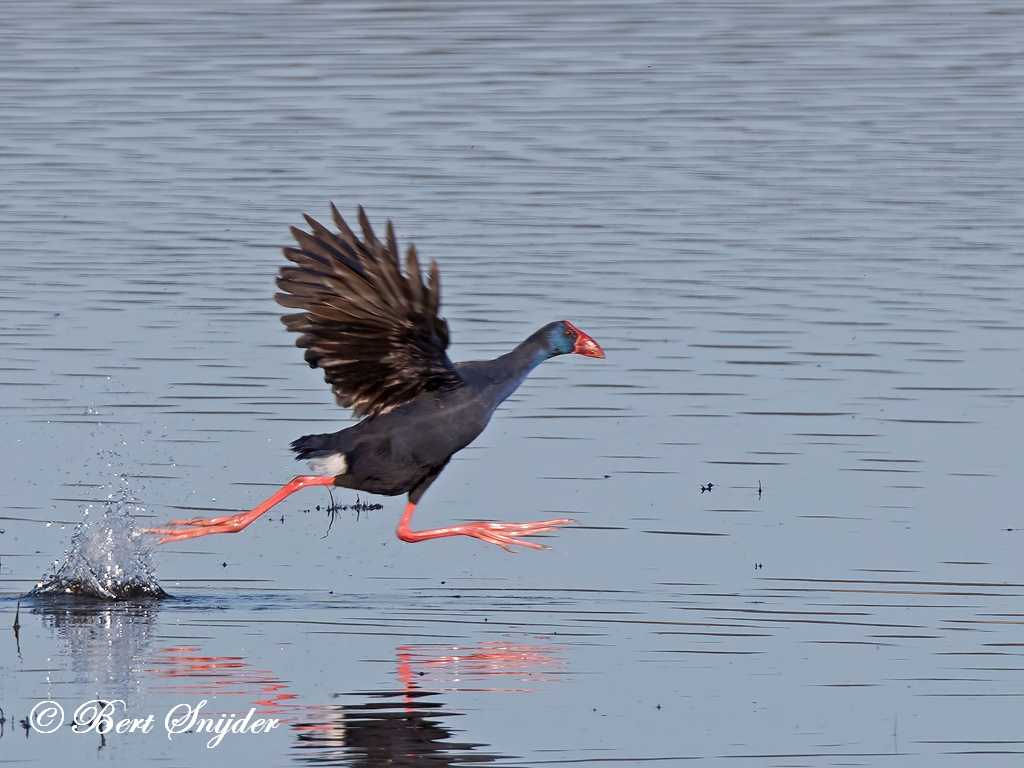
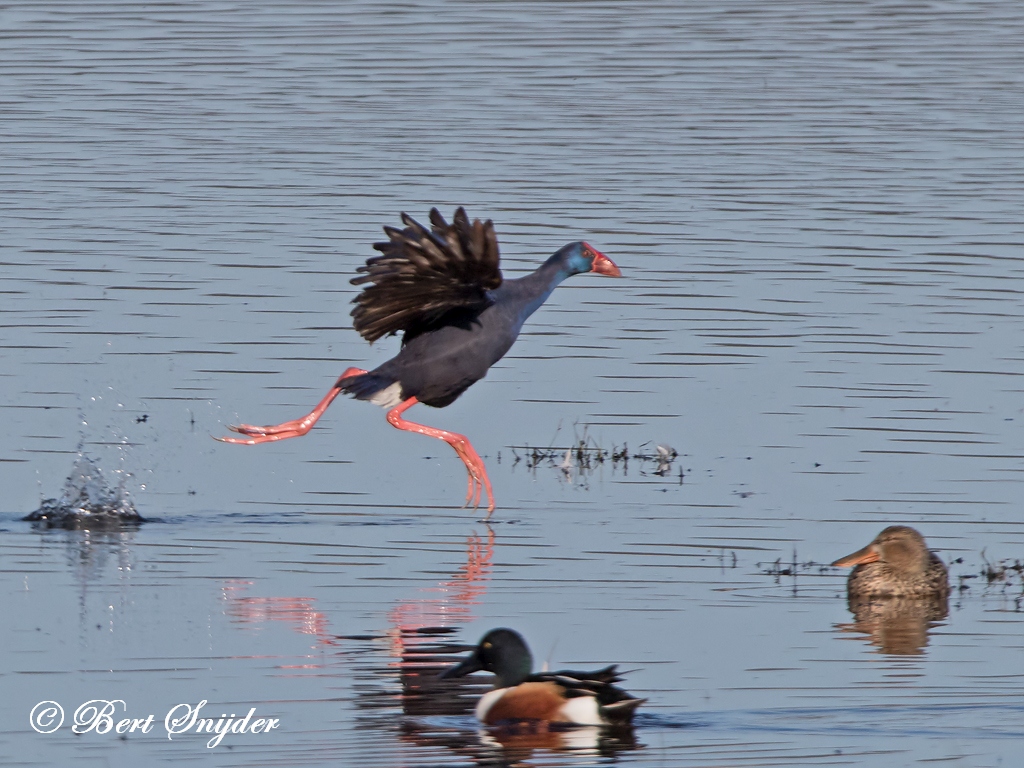
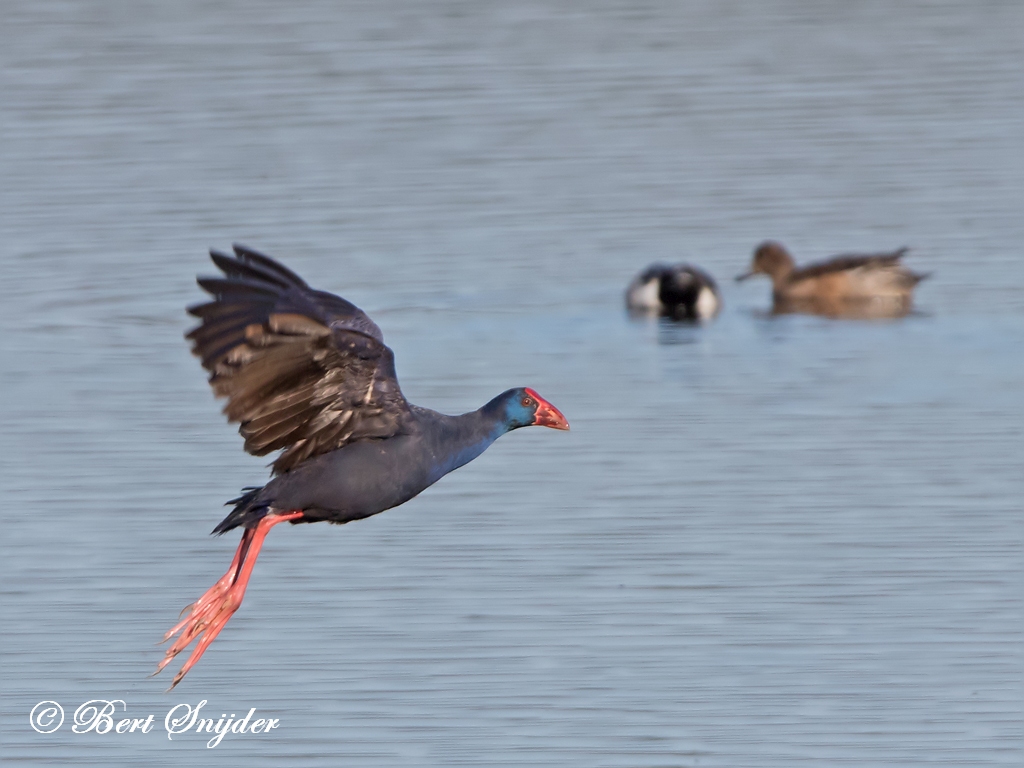
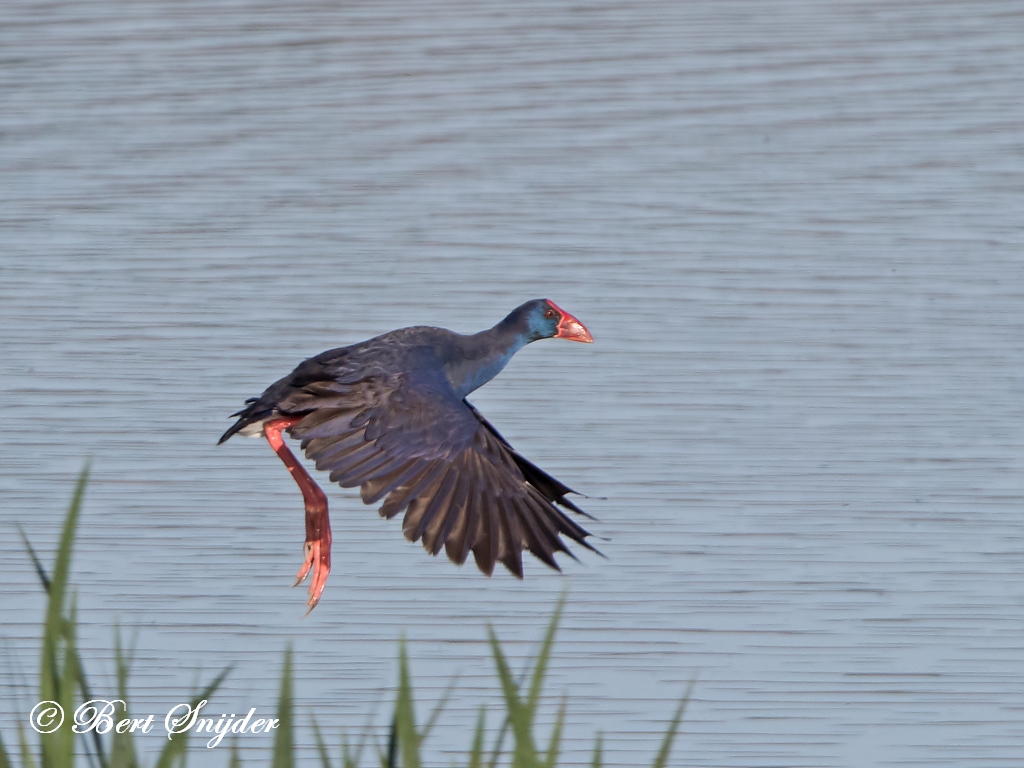
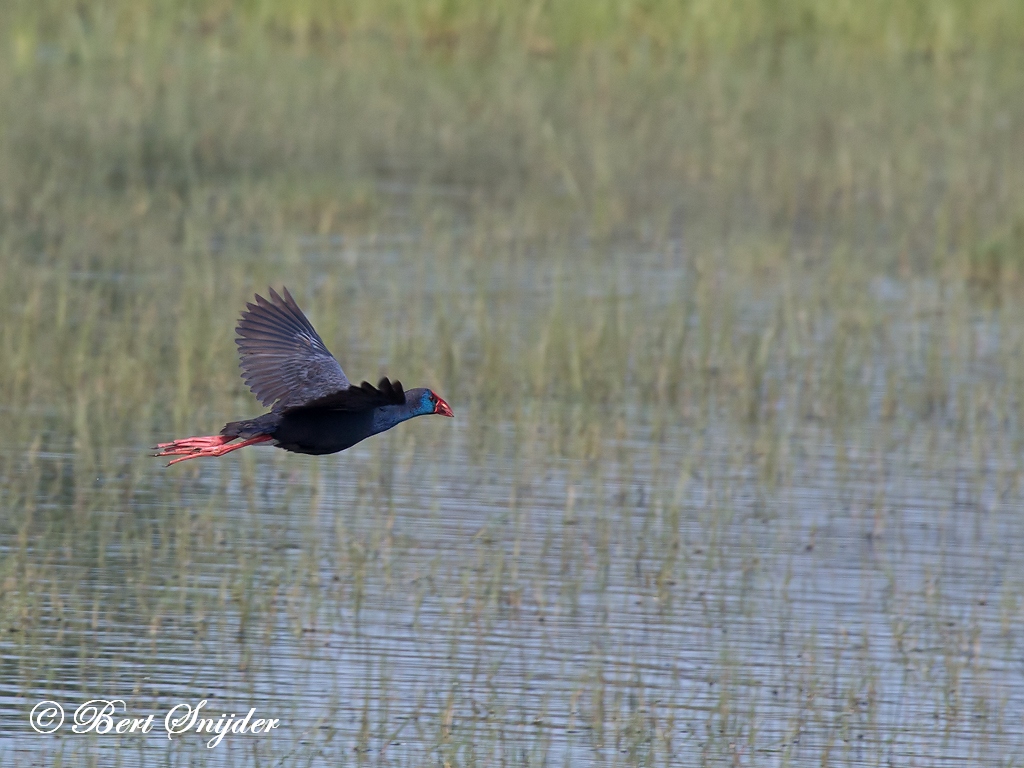
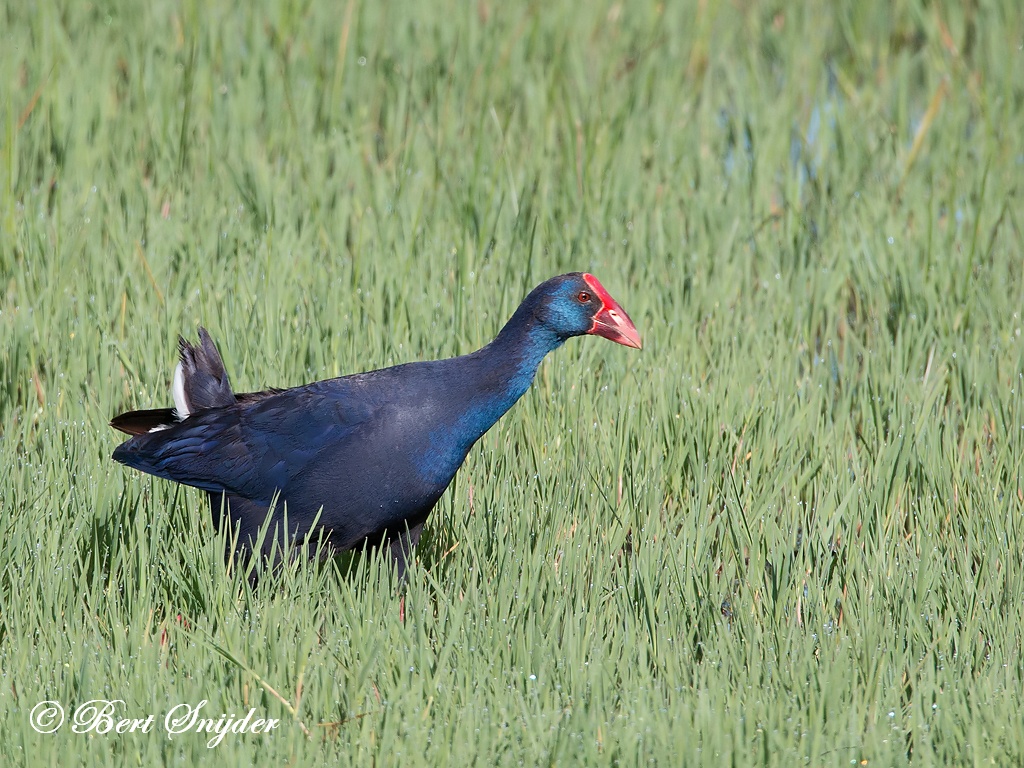
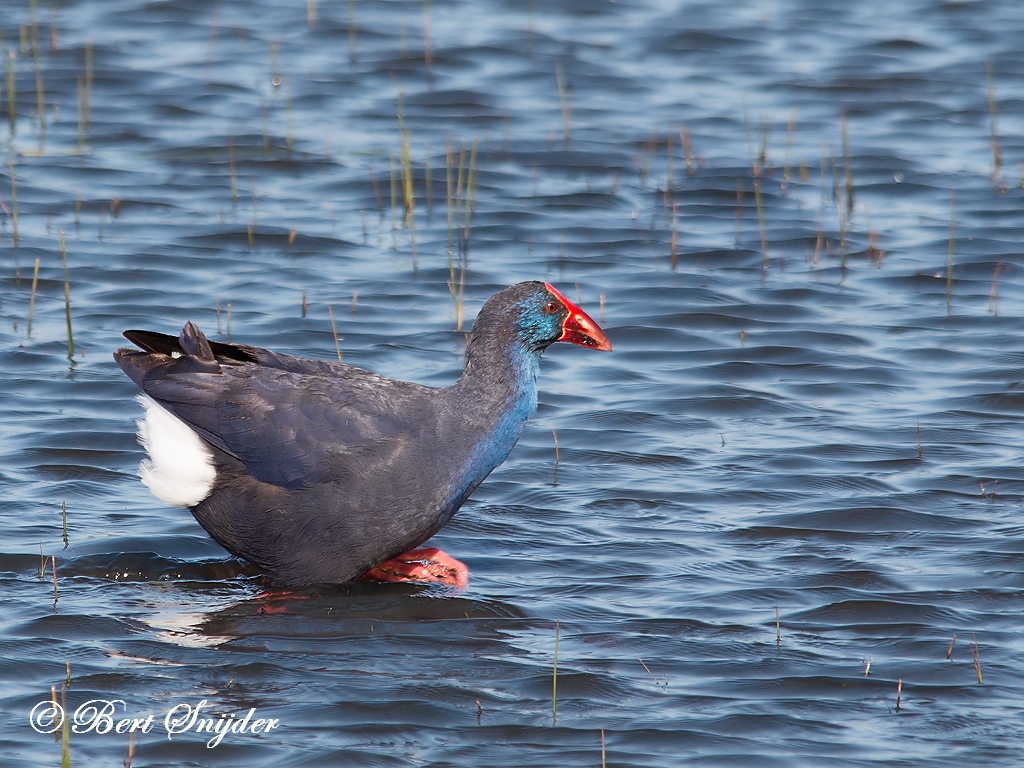
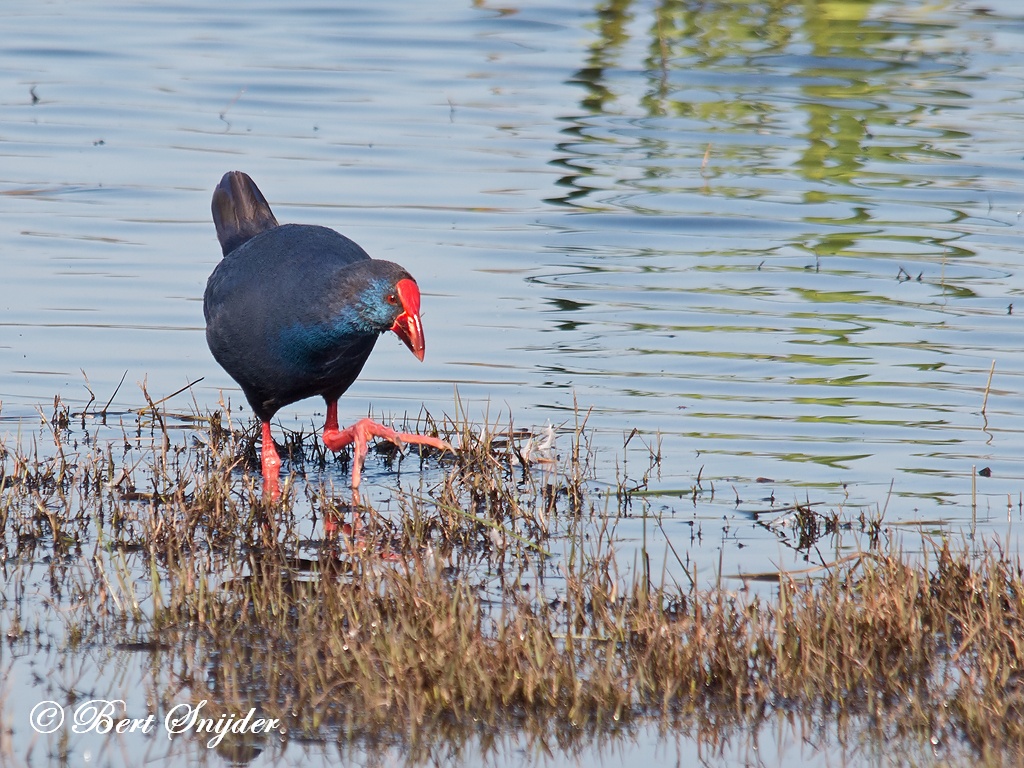
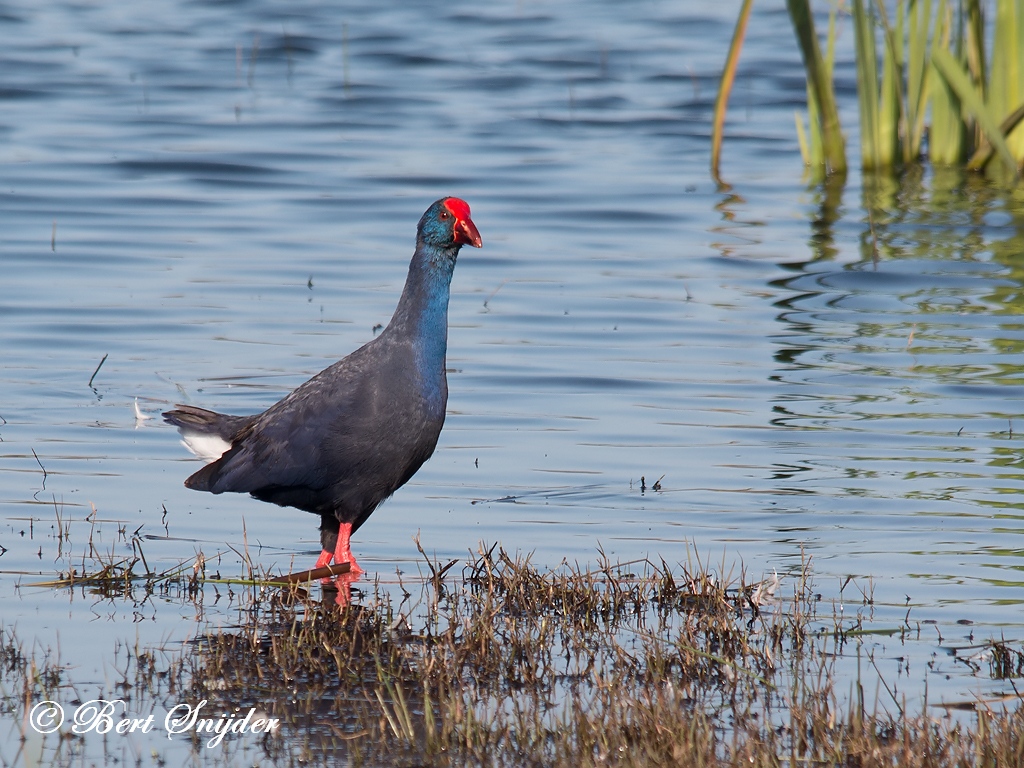
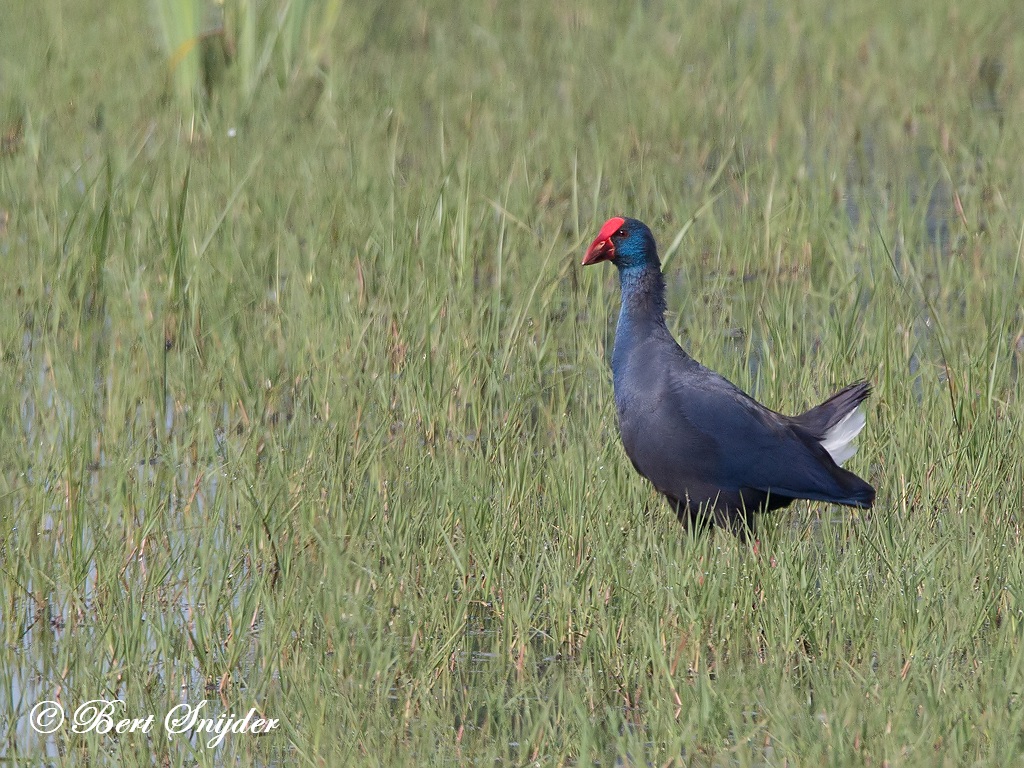




Other synonyms:
Afrikaans: Grootkoningriethaan
Catalan: Gall faver, Polla blava
Catalan (Balears): Gall faver
Czech: Grootkoningriethaan
Danish: Sultanhøne
German: Purpurhuhn
English: European Purple Gallinule, Purple Gallinule, Purple Swamphen, Purple Swamp-hen, West Mediterranean Purple Swamphen, Western Swamphen
Spanish: Calamón Común
Estonian: Sultantait
Basque: Polla blava, Uroilo urdina
Finnish: Sulttaanikana
Faroese: Brandnev
French: Porphyrion bleu, Poule sultane, Talève sultane
Irish: Cearcóg chorcra
Galician: Polla blava
Hindi: Tanneer kozhi
Hungarian: Kék fú
Indonesian: Mandar Besar
Icelandic: Bláhæna
Italian: Pollo sultano
Japanese: Seikei
Latin: Porphyrio porphyrio, Porphyrio porphyrio porphyrio
Malagasy: Talecana, Talevanabe, Vatry
Maori: pukeko
Malay: Pangling
Dutch: Purperkoet
Norwegian: Sultanhøne
Polish: modrzyk
Portuguese: Caimão
Romansh: Pulsauna sultana
Slovak: sliepo?ka modrá, sultánka modrá
Slovenian: afriška sultanka, sultanka
Swedish: Purpurhöna
Swahili: Shaunge Zambarau
Turkish: Sazhorozu
Vietnamese: Xít
Travel Birdwatching Holiday Alentejo, Vacation Portugal for birders to see birds on your trip. Guided Birdwatching Tours and Trips